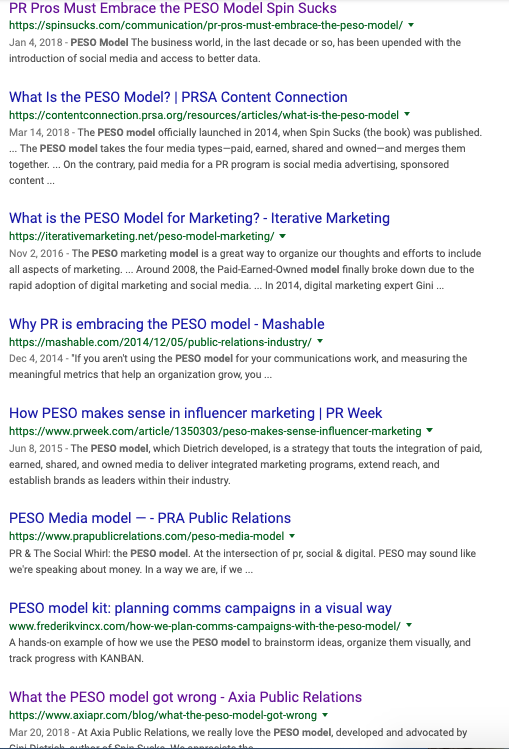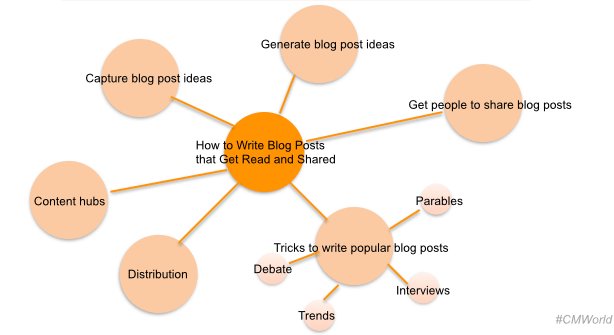 I have a confession to make. I write without an editorial calendar.
I have a confession to make. I write without an editorial calendar.
Ug! I know. Bad, bad Gini!
Until two weeks ago, I would sit down at 5 a.m. every morning and think, “What should I write about today?”
(Now I only write twice a week so it’s no longer every morning—yay, me!—but it’s still the same process.)
In some cases, I have blog posts percolating in my head for several days, as I research and learn more. That’s the case for something I’m going to write soon on trust and online bullying.
In other cases, when I sit down at my computer, I have no idea what is going to make it onto the page. I just…flows and then I get to decide if it’s worth publishing or if it’s crap.
It’s silly. I know. The rest of Spin Sucks runs on an editorial calendar.
For instance, our theme in January was measurement. I love measurement and data and metrics and proving the work we do is an investment, but there is no way I could write about it every day for an entire month.
I’d be bored, which means you’d most definitely be bored.
That’s why, when I give you some advice, I do so with a large grain of salt.
Create an Editorial Calendar
Are you ready for the advice? The advice you should take even though I don’t practice it myself?
Create an editorial calendar.
This will help you avoid that “what to write now” panic and keep you on track. It also helps with writer’s block. I really should practice what I preach.
In other words, don’t slack like I do nearly every day.
An editorial calendar is simply a schedule of content topics that ensure you always have a supply written, visual, and auditory content.
But, there is a better way to plan your content, which I DO do once a month to give existing content more legs.
Think of your content as a millipede. It has a body—the main topic—and it has up to 200 subtopics.
Create your millipede—or content map—by drawing a series of circles.
Start with one large circle in the middle of the page. This is your main topic.
From that circle, try drawing six or more medium-sized circles. These are your sub-topics.
From those circles, you’ll draw several small circles on each, which will serve as your supportive base.
For a speech I gave at Content Marketing World, I created a content map using a blog post I wrote on how to produce content that gets read and shared.
“How to write shareable blog posts,” then, becomes the main topic.
The sub-theme is more refined, such as “tricks to writing popular blog posts” and “generate blog post ideas.”
These go into your medium-sized circles.
Then, the small circles surrounding that one circle is content you can produce on that one topic.
For instance, create a debate between someone in your office and an industry influencer or talk about trends around the topic or interview an industry influencer.
These go into the small circles.
Continue that until you’ve exhausted all of your ideas.
Now, after doing this for the example, you have your main topic, six sub-topics, and four pieces of content as your supportive base.
You now have 11 pieces of content that help extend your main piece and begin to showcase your expertise.
An Editorial Calendar Helps Search
This also helps with your search rankings because now you have 11 pieces of content for one keyword.
Staying with the same “writing blog posts” topic as the example above, the goal is to create expertise around blogging and the types of content one would create to encourage people not to just to read it, but to share it.
That main piece of content lives on your website or blog and the sub-topics and supportive base all link to it.
Now, no matter where your other content lives—on your website, on your blog, on the LinkedIn publishing platform, on Medium, on other social networks, or you’ve guest written for another blog or publication—Google knows you are the authority on this topic.
It also tells human beings who see your content that you have expertise on this topic and it’s highly likely they’ll click over and read your main piece.
Let me give you one more example.
Google “PESO model.” Go ahead. I’ll wait.
You might get slightly different results than me, but when I Google it, we “own” almost every article on the first page.

Of course, the first one belongs to us and I authored the second one for PRSA. The rest all mention us so it’s not hard to figure out—both for humans and the Google spiders—who the authority is on the PESO model.
When you do your content planning like this, you’ll have the same kinds of results.
Next Steps for Editorial Success
Now all you have to do is decide what your priority keywords or phrases are for the year and get to work.
Our Modern Blogging Masterclass teaches this process, in-depth, but you can do a very remedial version by following the process I’ve outlined above.
The moral of the story is this: don’t be lazy like me. Create an editorial calendar. I promise it’s well worth the time it’ll take to figure out your priority keywords and craft a plan around them.
